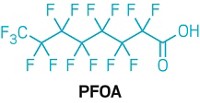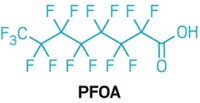Advertisement
Grab your lab coat. Let's get started
Welcome!
Welcome!
Create an account below to get 6 C&EN articles per month, receive newsletters and more - all free.
It seems this is your first time logging in online. Please enter the following information to continue.
As an ACS member you automatically get access to this site. All we need is few more details to create your reading experience.
Not you? Sign in with a different account.
Not you? Sign in with a different account.
ERROR 1
ERROR 1
ERROR 2
ERROR 2
ERROR 2
ERROR 2
ERROR 2
Password and Confirm password must match.
If you have an ACS member number, please enter it here so we can link this account to your membership. (optional)
ERROR 2
ACS values your privacy. By submitting your information, you are gaining access to C&EN and subscribing to our weekly newsletter. We use the information you provide to make your reading experience better, and we will never sell your data to third party members.
Pollution
U.S. senators seek regulation of PFASs as a class in drinking water
Biomonitoring should measure total organic fluorine rather than individual chemicals, NIH official recommends
by Cheryl Hogue
September 28, 2018
| A version of this story appeared in
Volume 96, Issue 39

To address contamination of drinking water with per- and polyfluoroalkyl substances (PFASs) across the country, U.S. lawmakers are urging EPA to regulate the chemicals as a class rather than controlling each individually.
EPA has a precedent for controlling drinking water contaminants as a class, Peter C. Grevatt, director of the agency’s Office of Ground Water & Drinking Water, said at a Sept. 26 Senate hearing. EPA regulates the by-products of disinfecting public drinking water as a group, he said.
“We look forward to having that broader approach taken by EPA” for PFAS contamination, responded Sen. Gary C. Peters (D-Mich.). He and other Democrats who represent states facing PFAS contamination of some communities’ drinking water want federal help to address these pollutants.
PFASs are environmentally persistent synthetic compounds. Some are linked to health effects including cancer, developmental problems, endocrine disruption, and metabolic diseases such as type 2 diabetes.
EPA hasn’t yet determined whether it will pursue regulation of PFASs in drinking water, Grevatt said. The agency’s decision will be part of a plan, expected later this year, to address PFAS contamination. If EPA decides to regulate these compounds, a rule would not be implemented for a few years, Grevatt said, given the legal procedures the agency must follow.
Also at the hearing, Linda S. Birnbaum, director of the National Institute of Environmental Health Sciences, recommended that biomonitoring for PFASs account for the large suite of compounds to which people can be exposed.
She said more than 4,700 PFASs are registered by CAS, a division of the American Chemical Society.
Additional compounds likely exist, formed when intentionally produced PFASs, especially polymers, break down in the environment, said Birnbaum, who also heads the National Toxicology Program. Birnbaum suggested that biomonitoring for the presence of PFASs in blood or tissue measure for total organic fluorine rather than individual compounds. Carbon-fluorine compounds are rarely found in nature, so virtually all organic fluorine in humans stems from exposure to PFASs, she said.
People are exposed to PFASs primarily by drinking tainted water, Birnbaum said. Recent studies show that people can also take in these chemicals through inhalation and via the skin, she added. Grevatt said people living near industrial sites that manufacture or use PFASs have higher exposure than the U.S. general population, as do those living in locales where PFAS-containing firefighting foams have been used, such as commercial airports or military bases.




Join the conversation
Contact the reporter
Submit a Letter to the Editor for publication
Engage with us on Twitter